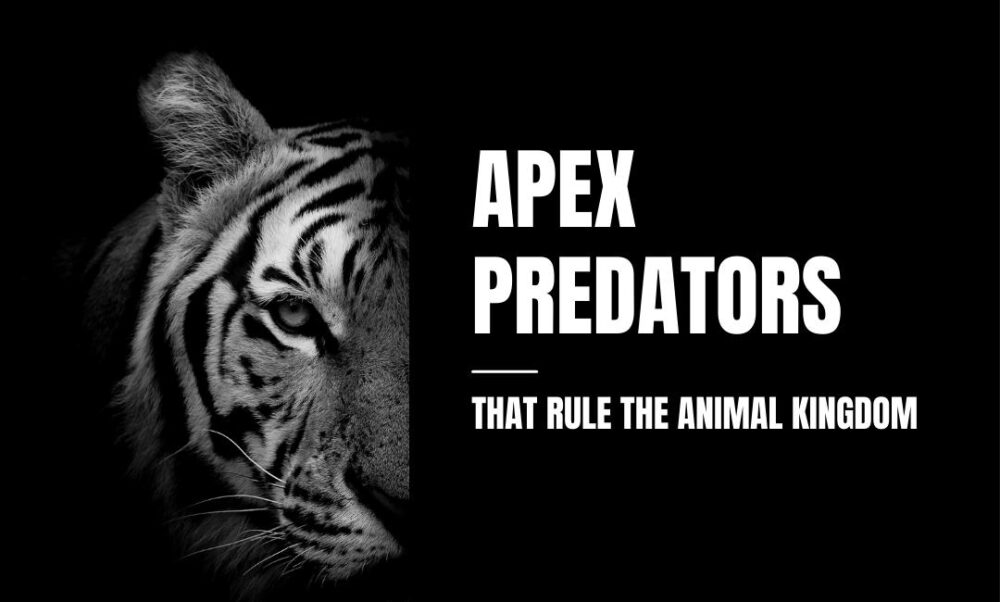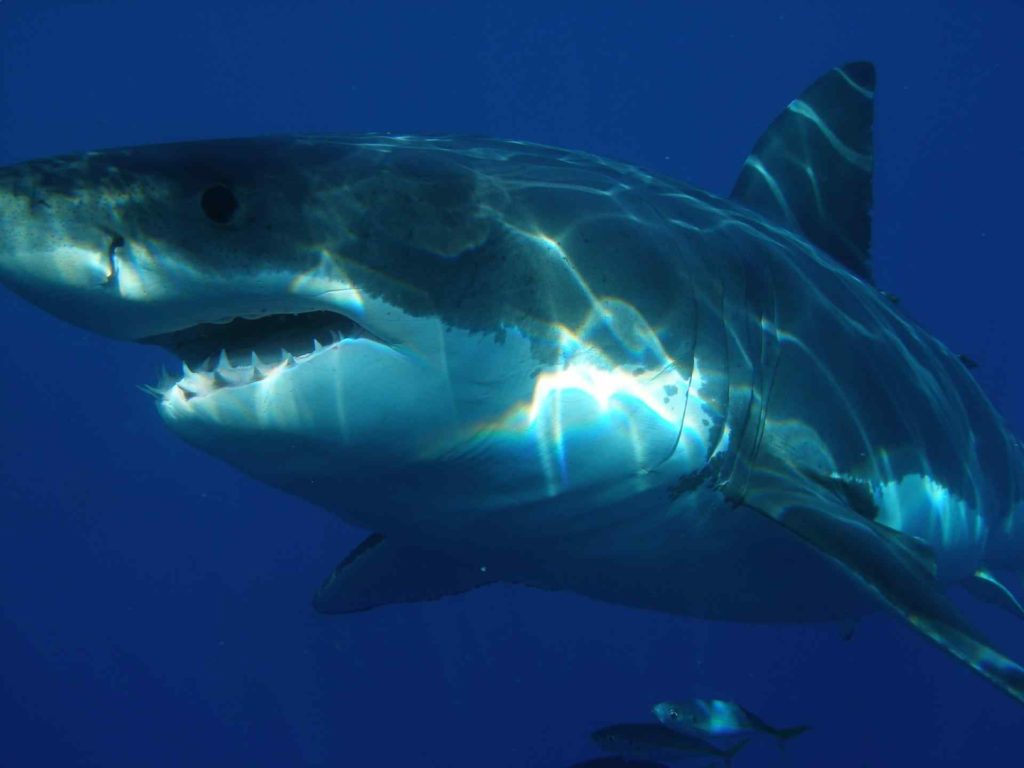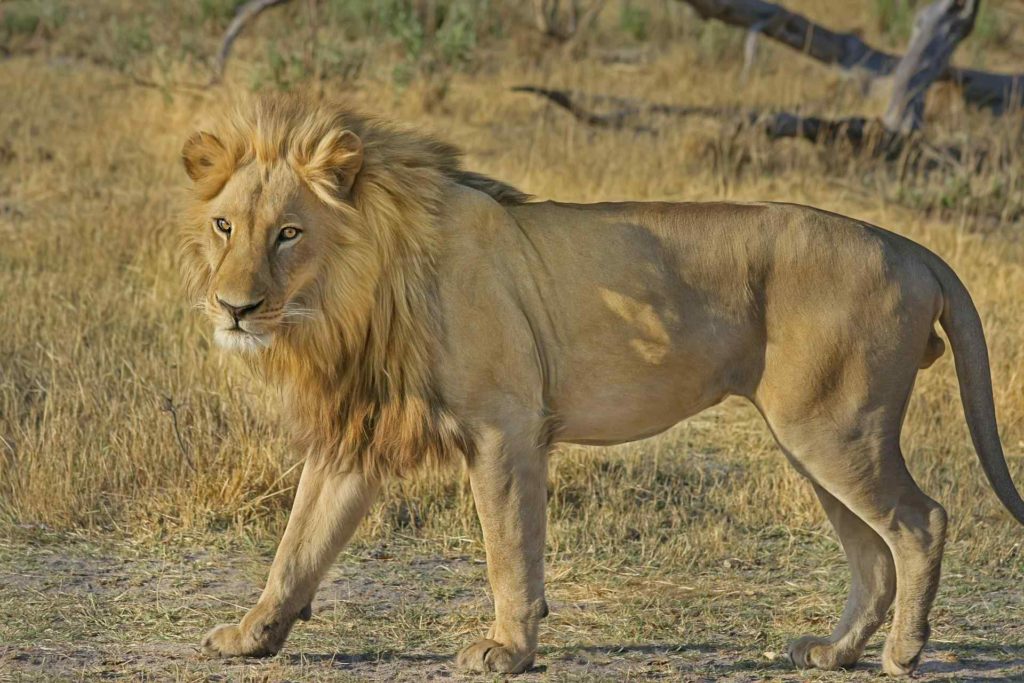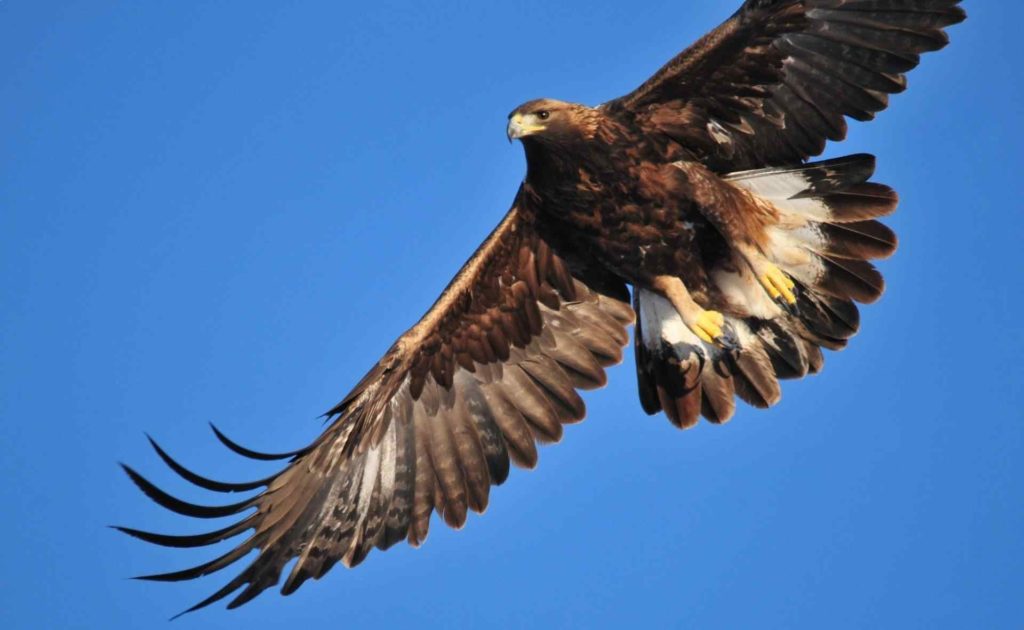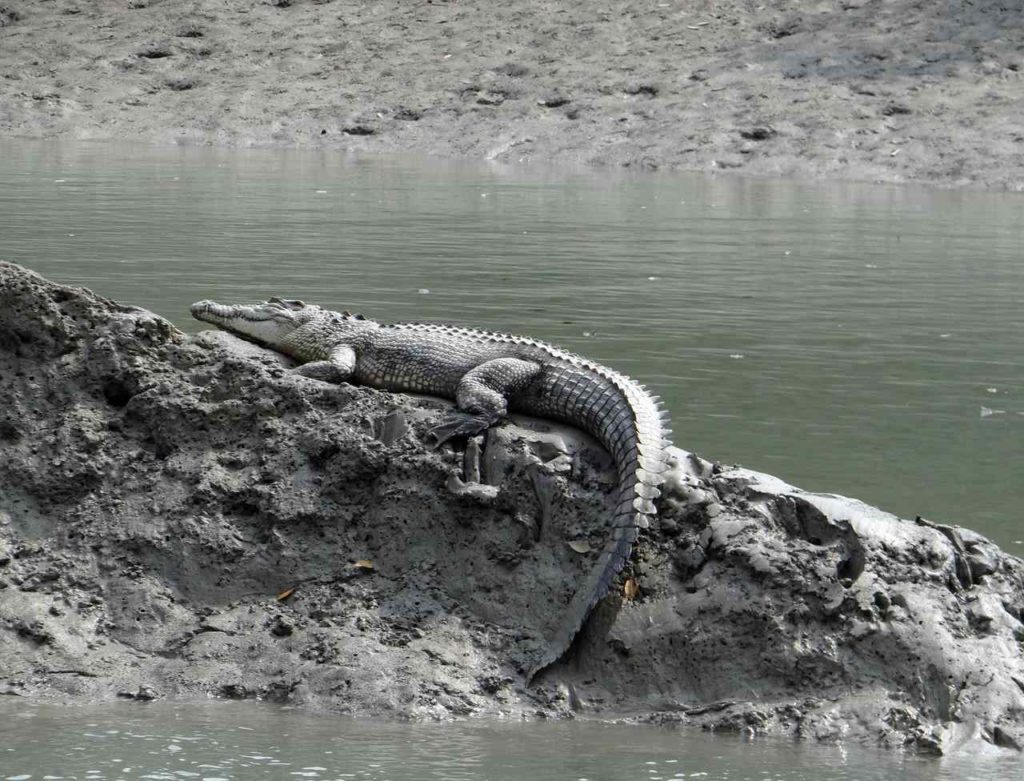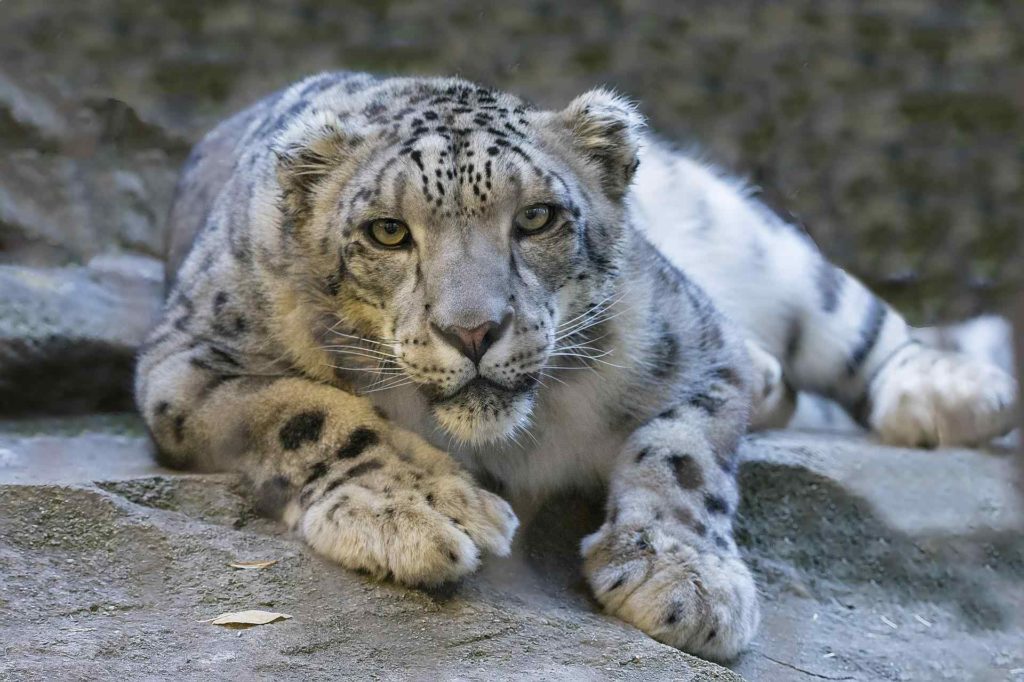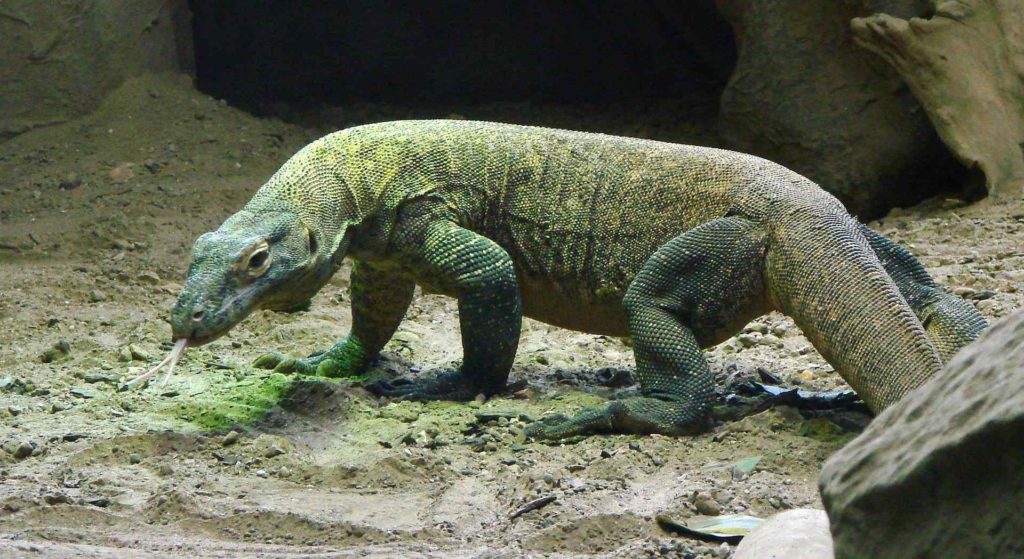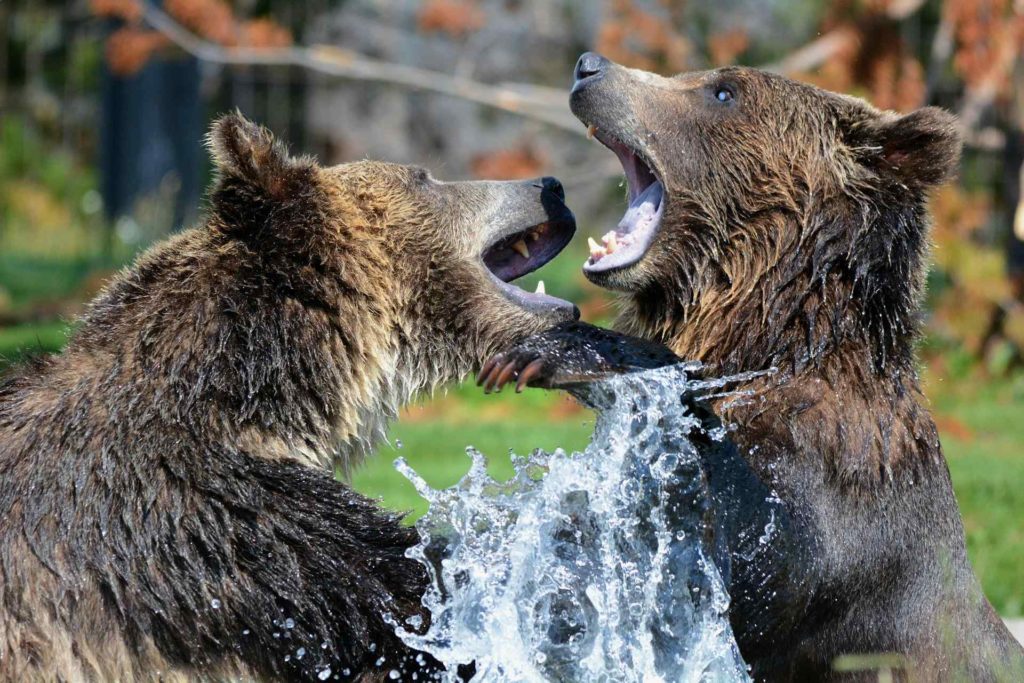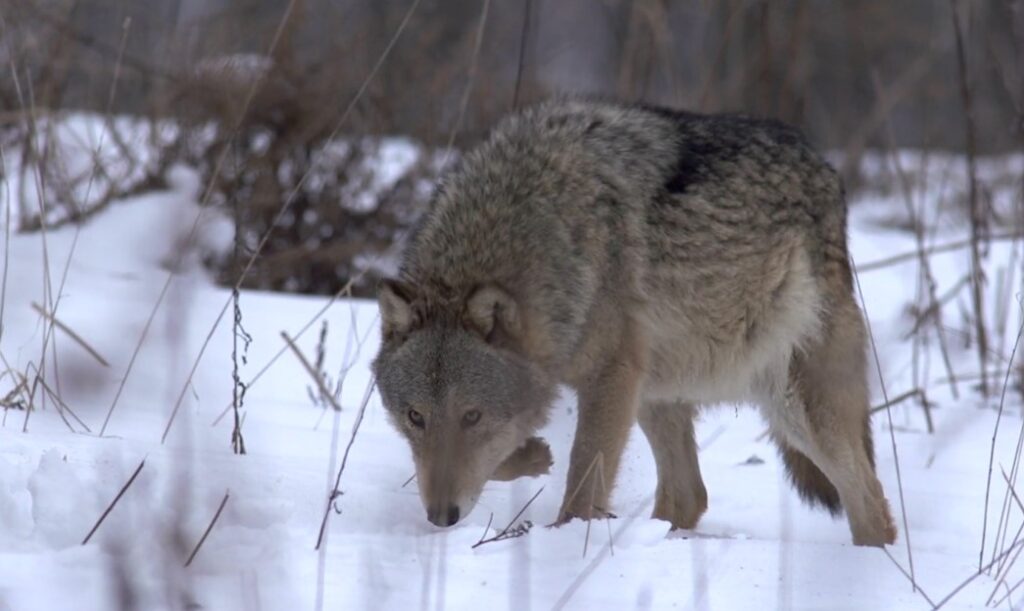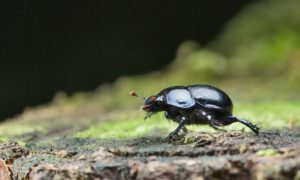In the wild, there is only one rule – eat or be eaten. This rule is demonstrated by a food chain where the plants and herbivores are towards the bottom and the predators are towards the top. Apex predators are those animals that are at the topmost level of the food chain for their habitat and are not pray to anyone. This is our list of the top 10 apex predators in the world,
Apex Predators
1. Killer whale
The Killer Whale, made famous by lead roles in many Hollywood movies, is not actually a whale and belongs to the dolphin family. It can grow up to 9 meters in length and weigh about 9000 kilos. They are social and highly intelligent animals that live in groups of around 40 members called “pods”.
Each group has a different sound it uses to communicate and distinct hunting techniques.
The Killer Whale hunts any marine animals ranging from small fish, seals, sharks to dolphins and other whales. You can also read about the most intelligent and smartest animals in the world. The sperm whale is the loudest animal in the world.
The apex predator can be seen in all oceans right from the Arctic to the Antarctic and tropical seas in the world.
The average lifespan of the female species is around 50 years, however, males can live upto 30 years on average. Talking about the appearance, they have a cylindrical body but it is tapering at both ends. It can be easily identified by black-and-white colouring.
The black colour appears on the top with white undersides and white patches near their eyes. The whale skin is smooth and continuously renews itself. This will help in increasing swimming efficiency. They travel at an average rate of 5 to 6.5 km/h.
Also known as orcas loves to hunt everything from fish, penguins, sea turtles, squid and even walruses. However, the diet varies as per the season and on an average they eat about 227 kilograms of food a day.
Killer whakes uses many hunting techniques that includes bumping seals off ice, howveer, they love to hunt in ‘pods’ also known as family groups. Killer whales have around 45 teeth that is approximately 7.6 centimeters long shaped in the form of ripping prey.
Accordiing to various scientists, the body pattern of killer whales helps them to attack the prey.
Also Read: Top 10 Endangered Animals In The World
2. Tiger
One of the most amazing animals in the world and the majestic big cat is the most feared predator of Asian jungles and can weigh up to 300 kilos. It lives and hunts alone and is fiercely territorial often fighting with other tigers for control of territory.
The muscular body, speed and striped fur used to camouflage in the foliage make it a deadly predator which has no match in the wild. Of the nine sub-species of the tiger, three are already extinct and the other six, including the Bengal Tiger, are endangered due to poaching and habitat loss. If a proper action will not be taken soon Tiger is one of the animal that would dissapear very soon.
One of the biggest cats in the world is known for its power and strength. Today, we have 5 species of tiger known that includes Bengal, South China, Indochinese, Sumatran and Siberian, however, three species Caspian, Bali and Javan are extinct now.
The average lifespan of the tiger is about 15 years in the wild and 26 years in captivity. Tigers are good swimmers and love to spent time in pools or streams. The roar of the loudest animal can be heard as far as 3 kilometres (1.8 miles) away. Tigers have colour vision like humans and scratch trees and use their urine to mark their territories.
The unique feature is that every tiger ha as a unique pattern of stripes, no two tigers have the same patterns.
The female species of the Tiger is known as a tigress and it can become a mother at the age of 3 and half years and usually layoff 3 to 4 cubs at one time.
Like all mothers, Tigress is very protective mothers, howvever half of the child has been killed by predators or lack of food. There are few cubs that leave mother at the age of 2 and loves to have solitary life. The species has excellent sight of vision which is 6 times better than humans.
Also Read: Top 10 Most Wild Animals in the World
3. Great White Shark
This large fish too has acquired fame thanks to Hollywood and is the largest predatory fish in the world (the Killer Whale, though larger, is a mammal). It hunts smaller fish, whales, turtles, and seals using its sense of smell and over three hundred sharp teeth. However, one of the heaviest animals in the world, it can reach great speeds using its tail and is the apex predator of the seas. The average lifespan of the great white sharks is approximately 70 years or more.
The apex predator is the most feared sharks in the world. It is visible in all coastal and offshore waters that have a temperature between 12 and 24 °C and hence mostly seen in the United States, Chile, South Africa, Japan and the Mediterranean.
The planet’s largest known predatory fish can reach upto 3.4 to 6.1 meters in length and weighs approximately 520 and 2,268 kilograms. The female species is usually larger than males. The species can swim at a speed of 56 km/h and can launch themselves more than 3 meters into the air. The shark species are known to have a tremendous brain that coordinates with highly-developed senses for the apex predator.
The great white shark is at the top of the food chain and only killer whales pose them a threat. Also, humans interaction is a threat to the species where it was accidentally caught in fishing nets and later jaws and fins are sold for teh considerable amounts of money. There is no particular information about the mating of the species, however, what is known is that after mating the female develops several eggs that hatch in her womb.
Also Read: Top 10 Biggest Animals In The World
4. Lion
This majestic predator is found in Asia and Africa and is the second-biggest member of the Felidae family after the tiger. The male is identified by the golden-brown mane around its neck. Lions live in groups of 10-40 members called “pride” led by the male. The lionesses are responsible for hunting and they do this as a group by chasing the prey and killing it by puncturing the windpipe using their sharp teeth. Their wild populations are declining due to poaching, deforestation and habitat destruction.
The second largest cat in the world after tigers are most social among all of them and love to live in groups known as “prides.” The largest pride consist of almost 30 members, however, the average one consist of five or six females with cubs and one or two males.
The average weight of the lion is approximately 180 kg, however, females have an average weight of around 130 kg. They can run at a speed of 81 kph but only for shorter distances because of less stamina.
The roar of the adult lion can be heard from 8 kilometres away. They love to eat large animals such as antelopes, zebras and wildebeest. Lions have terrific night vision and it helps them in hunting at night.
The average lifespan of about 10-14 years in the wild, however, in captivity it is 20-25 years old.
One of the biggest cats in the world can be easily recognized by their manes. The more the manes are larger and darker, it is said that the lion if more strong and other lion species avoids them. When lion and lioness meet they mostly greet each other by rubbing. In this process, they also exchange scents. The species have retractable claws that mean they can easily retractable “hide” their claws during the play and avoid hurting each other.
The most shocking fact is that when a new lion takes over a pride, it kills all the cubs that are not his own. This is really sad! It is believed that the three fourth of the cubs die at a young age.
Also Read: This Is The Largest Reptile Zoo In The World
5. Polar Bear
These large bears are found to the extreme north, in the Arctic region and are able to live in very cold conditions due to their thick fur and a layer of fat under the skin called blubber. They hunt a number of smaller arctic animals like seals, sea lions, otters and fish and can weigh more than 700 kilos, making them the largest terrestrial carnivores.
They have no natural predators in their habitat and are therefore classified as apex predators.
The apex predator lives in the Arctic and has a lifespan of 15 to 18 years in the wild, however, in captivity, it is twice. They have an excellent sense of smell that helps them in hunting seals which is their main source of food. Polar bears can detect seals from 1 km away and 1m under the snow.
They can run at a speed of 40 kilometres per hour on land. The fur appears white to the eye but it is actually transparent because it reflects visible light. The biggest threat to the species is not hunting but the effects of global warming and pollution.
Polar bears dont hibernate that means they are active throughout the year. The species takes good care of himself where they spend 15-20 minutes in grooming themselves after they had a good diet. The mating season of the polar bear is around April and May where the female can give birth to 1-3 cubs in November or December.
The mother takes care of the cubs in the special dens known as “maternity dens” for three months. The mother dont eat or drink during this period. Polar bear cubs stay with the mother until they turn 2 and a half years because they are slow breeders and have approximately 5 litters maximally in a lifetime.
Also Read:10 Deadliest Prehistoric Animals On Planet Earth
6. Golden Eagle
The only bird to make it to the list of top ten apex predators, the Golden Eagle is one of the fastest birds in the world with strong wings and sharp talons it uses to tear into prey. it also has excellent eyesight and can spot prey from great heights, after which it swiftly dives to catch it.
Eagles can reach speeds of over 300 kilometers per hour during such dives. They prey on rabbits, smaller birds, snakes, and rodents. You can also read about a few nocturnal animals that are only active in night.
The most widely distributed species of eagle is mostly seen in the range of Mexico and western North America. They are also seen in Asia, northern Africa, and Europe. Talking about the appearance, the Eagles’ feathers are black-brown to dark brown in color, however, they have striking golden heads and necks and hence the name.
The apex predators can grow up to 75 to 90 centimeters in length and have a wingspan from 1.9 to 2.3 meters. They can fly at a speed of 320 kilometers per hour. It loves to fly over mountains, plateaus, and steppes. It can fly over 100 Kms while searching for food. The species have a lifespan of up to 38 years in the wild and 50 years in captivity.
Talking about mating, the species mate when they are 4 years old and stay with the same partner for years and sometimes for a lifetime. Golden eagles built their nest on high cliffs usually high trees or rocky crags where the child can be protected from predators and get to their eggs.
The nests can be used for several years by the pair of eagles It is believed that females lay up to four eggs and hatches in approximately 40 to 45 days. The male Golden eagle has the responsibility of bringing food for the sitting female and later the young will leave the nest after 3 months.
7. Saltwater Crocodile
These crocodiles are the largest reptiles living today and can grow to lengths of 5 meters and weigh over 1000 kilos. They are found in Australia, Indonesia, India, Malaysia, Thailand and Papua New Guinea.
They hunt prey by lying still in the water and waiting for it to approach, after which they strike with deadly precision and drag the prey down into the water. One of the most aggressive animals in the world hunt all animals including deer, wild boar, monkeys, fish and other crocodiles. They are apex predators and one of the toughest animals in the world.
The largest crocodile is the saltwater crocodile that grows upto 7.0 meters in length and weighs up to 1,200 kilograms. All crocodiles in the world are characterized by a lizardlike shape and have thick skin overlapping over bony plates.
The streamlined body of the crocodile helps them in swimming that helps them by decreasing water resistance. Their night vision and acute senses make them one of the most successful apex predators in the world.
During hatching, saltwater crocodiles make chirping sounds from within their eggs. The mother helps them by digging out of the nests and once she takes them at the water’s edge with the help of her mouth and later continuously watches them unless they look for themselves.
The saltwater crocodile eggs take 90 days to develop and sex is determined by the incubation temperature. According to the scientists below 30-degree Celsius, it will be female and above 32-degree Celsius, it will be a male.
8. Snow Leopard
This elusive cat is called a Ghost because they are very difficult to spot. This is mainly due to diminishing population size, extreme stealth, and excellent camouflage. They live on the mountain slopes of South and Central Asia and hunt animals larger than them like Himalayan Blue Bull, Ibex, Argali, and other mountainous cattle.
It uses its strong legs to pounce on the prey and kills it like the lions, by puncturing the windpipe. Because it lives at such high altitudes, it has no other predator to compete with and is the apex predator of the snow caps.
The mystical wild cats are between 86 – 125 cm long without a tail. The tail has an approximate length of 80 to 105 cm long. Talking about the appearance, Snow leopards have base colours that vary from smoky grey to yellowish tan with whitish underparts.
They have a light green or grey eye which is quite unusual for big cats because they have yellow or gold eyes. The endangered species were mostly seen in rugged mountains of Central Asia including the Himalayan Mountains of Nepal, India, Pakistan, Mongolia, China Afghanistan and Russia, however, they love steep and rocky terrain.
The cubs of Snow leopards are born blind and they don’t gain sight until they’re nine days old.
9. Komodo Dragon
The Komodo dragon may seem like an unlikely entry, but this large lizard is an effective predator because of an unusual property. One of the fierce animals in the world lives only in a small part of Indonesia and kills its prey by biting it, which injects thousands of bacteria in its body.
Even if the prey escapes, it is likely to die within 24 hours because of the bacterial infection. The Komodo dragon then returns to eat the dead animal.
Because of its extremely limited habitat, it has no natural predator making it one of the top ten apex predators. You can also read about the most dangerous animals in the World.
The largest living species of lizard is also known as Komodo monitor and they can be only seen in 5 islands of southeastern Indonesia.
Talking about the appearance, Komodo dragons are mostly brown or reddish or grey in colour depending on teh location.
The body is covered with rough scales and has strong limbs with a powerful muscular tail. The heads have a rounded snout and ear openings. The apex predator can run upto 20 km/h but tire quickly due to low stamina. The average lifespan of the Komodo dragon is about 30 years in the wild.
10. Grizzly Bear
This animal, a much-feared predator in North America has the scientific name Ursus horrible. It is smaller than the Polar Bear and the Alaskan Brown Bear but is known for frequently attacking humans who come too close. It has sharp claws and teeth and attacks prey with great speed.
It also uses its sense of smell and hearing to locate fish, rodents and small animals that it eats though it does not have very good eyesight. One of the most popular US animals has made it to the list of top ten apex predators due to its temperament and willingness to attack anything it sees as a threat, usually with fatal accuracy.
It is also listed as one of the carnivorous bears in the world.
The total length of the bear subspecies is 198 cm and have an average lifespan of 22 years in the wild, however, female live slightly longer with a lifespan of 26.
The apex predator has mostly seen in western Canada and Alaska and also in some regions of northwestern United States including Wyoming, Montana, Washington and Idaho.
The species love to live in dense forests to subalpine meadows. It can run at a speed of 56 kilometres per hour. You must also know about non-venomous snakes in the world.
Wolves
Wolves can be found in North America and Eurasia, mostly in temperate climates, and they are apex predators due to their lack of natural predators and pack hunting ability. Despite weighing under 100 pounds, they live in complex social groups called packs, typically consisting of around eight members, but sometimes over twenty individuals.
Wolves are opportunistic eaters and will hunt anything from rabbits to lizards, but their primary diet is hoofed terrestrial mammals like elk, bison, moose, goats, and deer. Packs can take down larger prey, but they specialize in targeting weak and vulnerable members of herds.
In regions where they overlap, tigers, brown bears, and cougars are significant threats to wolves. Wolves will generally avoid one-on-one confrontations with these larger predators, but as a pack, they can compete for kills. Siberian tigers are the only natural predator that can suppress wolf populations to near extinction, otherwise, wolves have no natural predators.
Leopard Seals
Leopard seals are the most predatory seal species in the Antarctic and the second-largest. With their large heads, strong jaws, and sharp teeth, they are skilled hunters, and their only known predator is the orca.
They can be found throughout Antarctic waters and typically live on and around sea ice. While they tend to be solitary, mothers with pups are sometimes seen in groups.
Leopard seals have a varied diet that includes fish, penguins, and other seal species. When they are young, they feed on krill until they are old enough to hunt larger prey. To tear apart their prey, they hold it between their jaws and shake it.
The biggest threat to leopard seal populations is global warming. As their habitat is sea ice, rising temperatures and melting ice are destroying their homes.
So, these are the apex predators in the world. Do post your comments.

